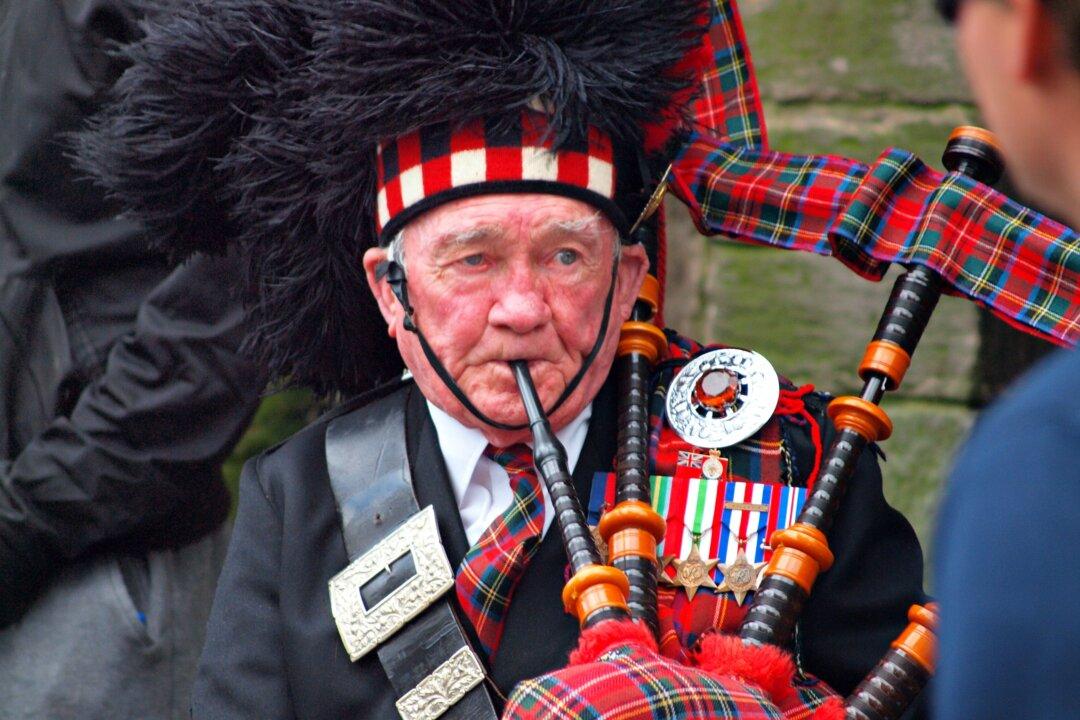The Great Highland bagpipe is as central to Scottish identity as tartan and Robert Burns. Walk down Edinburgh’s Royal Mile and you'll hear that familiar wail, while pipers gather each year to empty their lungs at everything from local competitions to the famous Edinburgh Military Tattoo. The pipes were not invented in Scotland, though. In fact, they are part of a much older tradition that some may find unpalatable: The English were playing the pipes hundreds of years before the Scots got their hands on them.
Bagpipes are actually a family of instruments, and most countries from India to Scotland and from Sweden to Libya boast at least one indigenous variety. They date back over 3,000 years, but appear to have been developed from the hornpipe, which goes back even further. Through the millennia, bagpipes have appeared in an incredible number of varieties—big like a zampogna gigante; small like a musette; droneless, or with two or more drones (or reeds); and with either one or two chanters (or pipes).
The drones can be vertical or horizontal, compressed into a little barrel or dangling on the piper’s back, and the bag can be inflated by a mouthpiece or by bellows. The bag can be covered in brocade or tartan, left as a tanned skin, or even made of Gore-Tex. Each has its own scale, tone, and sound, all of which tells a tale about their home country.
Bag-innings


